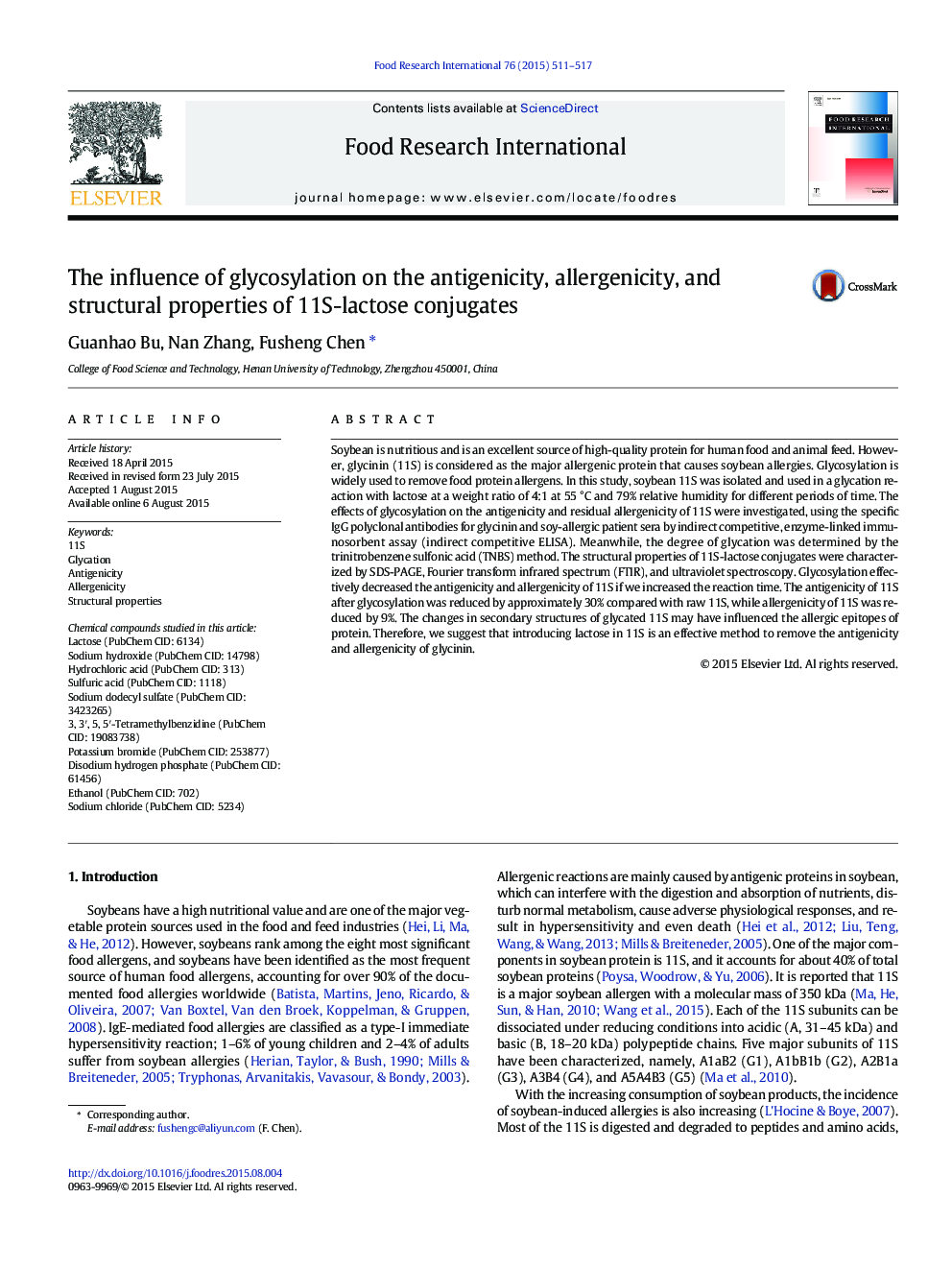| Article ID | Journal | Published Year | Pages | File Type |
|---|---|---|---|---|
| 6395163 | Food Research International | 2015 | 7 Pages |
â¢Glycosylation effectively decreased the antigenicity and allergenicity of 11S.â¢The structural properties of conjugates were characterized by FTIR and UV.â¢SDS-PAGE confirmed the occurrence of a Maillard reaction.â¢The degree of glycation increased with increasing incubation time.
Soybean is nutritious and is an excellent source of high-quality protein for human food and animal feed. However, glycinin (11S) is considered as the major allergenic protein that causes soybean allergies. Glycosylation is widely used to remove food protein allergens. In this study, soybean 11S was isolated and used in a glycation reaction with lactose at a weight ratio of 4:1 at 55 °C and 79% relative humidity for different periods of time. The effects of glycosylation on the antigenicity and residual allergenicity of 11S were investigated, using the specific IgG polyclonal antibodies for glycinin and soy-allergic patient sera by indirect competitive, enzyme-linked immunosorbent assay (indirect competitive ELISA). Meanwhile, the degree of glycation was determined by the trinitrobenzene sulfonic acid (TNBS) method. The structural properties of 11S-lactose conjugates were characterized by SDS-PAGE, Fourier transform infrared spectrum (FTIR), and ultraviolet spectroscopy. Glycosylation effectively decreased the antigenicity and allergenicity of 11S if we increased the reaction time. The antigenicity of 11S after glycosylation was reduced by approximately 30% compared with raw 11S, while allergenicity of 11S was reduced by 9%. The changes in secondary structures of glycated 11S may have influenced the allergic epitopes of protein. Therefore, we suggest that introducing lactose in 11S is an effective method to remove the antigenicity and allergenicity of glycinin.
